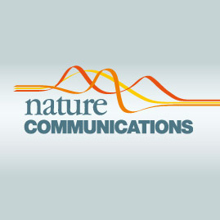Filter
Associated Lab
Publication Date
Type of Publication
15 Publications
Showing 11-15 of 15 resultsAnimals seek out relevant information by moving through a dynamic world, but sensory systems are usually studied under highly constrained and passive conditions that may not probe important dimensions of the neural code. Here, we explored neural coding in the barrel cortex of head-fixed mice that tracked walls with their whiskers in tactile virtual reality. Optogenetic manipulations revealed that barrel cortex plays a role in wall-tracking. Closed-loop optogenetic control of layer 4 neurons can substitute for whisker-object contact to guide behavior resembling wall tracking. We measured neural activity using two-photon calcium imaging and extracellular recordings. Neurons were tuned to the distance between the animal snout and the contralateral wall, with monotonic, unimodal, and multimodal tuning curves. This rich representation of object location in the barrel cortex could not be predicted based on simple stimulus-response relationships involving individual whiskers and likely emerges within cortical circuits.
New technologies for monitoring and manipulating the nervous system promise exciting biology but pose challenges for analysis and computation. Solutions can be found in the form of modern approaches to distributed computing, machine learning, and interactive visualization. But embracing these new technologies will require a cultural shift: away from independent efforts and proprietary methods and toward an open source and collaborative neuroscience.
Neural circuitry has evolved to form distributed networks that act dynamically across large volumes. Conventional microscopy collects data from individual planes and cannot sample circuitry across large volumes at the temporal resolution relevant to neural circuit function and behaviors. Here we review emerging technologies for rapid volume imaging of neural circuitry. We focus on two critical challenges: the inertia of optical systems, which limits image speed, and aberrations, which restrict the image volume. Optical sampling time must be long enough to ensure high-fidelity measurements, but optimized sampling strategies and point-spread function engineering can facilitate rapid volume imaging of neural activity within this constraint. We also discuss new computational strategies for processing and analyzing volume imaging data of increasing size and complexity. Together, optical and computational advances are providing a broader view of neural circuit dynamics and helping elucidate how brain regions work in concert to support behavior.
Understanding how the brain works in tight concert with the rest of the central nervous system (CNS) hinges upon knowledge of coordinated activity patterns across the whole CNS. We present a method for measuring activity in an entire, non-transparent CNS with high spatiotemporal resolution. We combine a light-sheet microscope capable of simultaneous multi-view imaging at volumetric speeds 25-fold faster than the state-of-the-art, a whole-CNS imaging assay for the isolated Drosophila larval CNS and a computational framework for analysing multi-view, whole-CNS calcium imaging data. We image both brain and ventral nerve cord, covering the entire CNS at 2 or 5 Hz with two- or one-photon excitation, respectively. By mapping network activity during fictive behaviours and quantitatively comparing high-resolution whole-CNS activity maps across individuals, we predict functional connections between CNS regions and reveal neurons in the brain that identify type and temporal state of motor programs executed in the ventral nerve cord.

